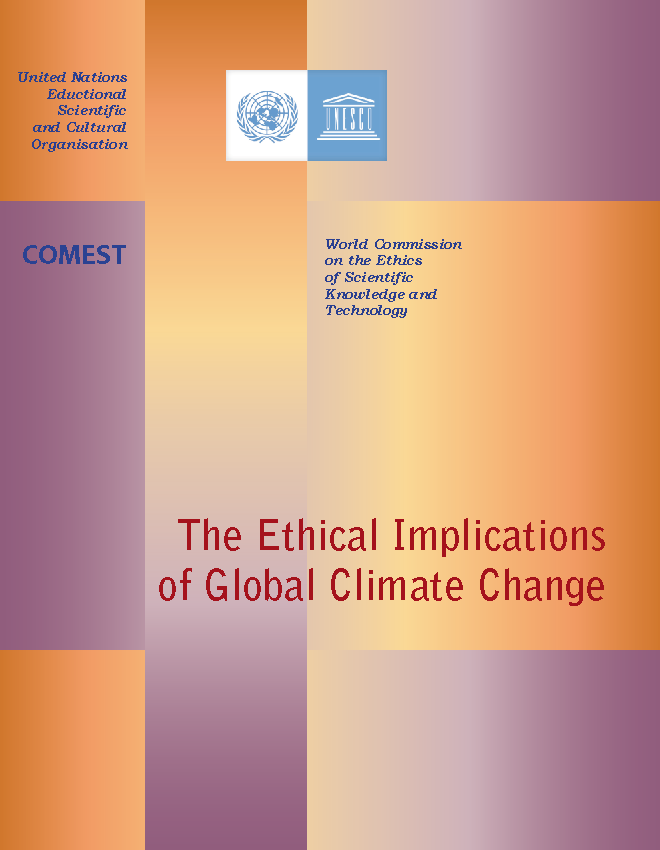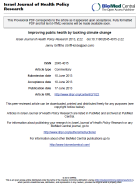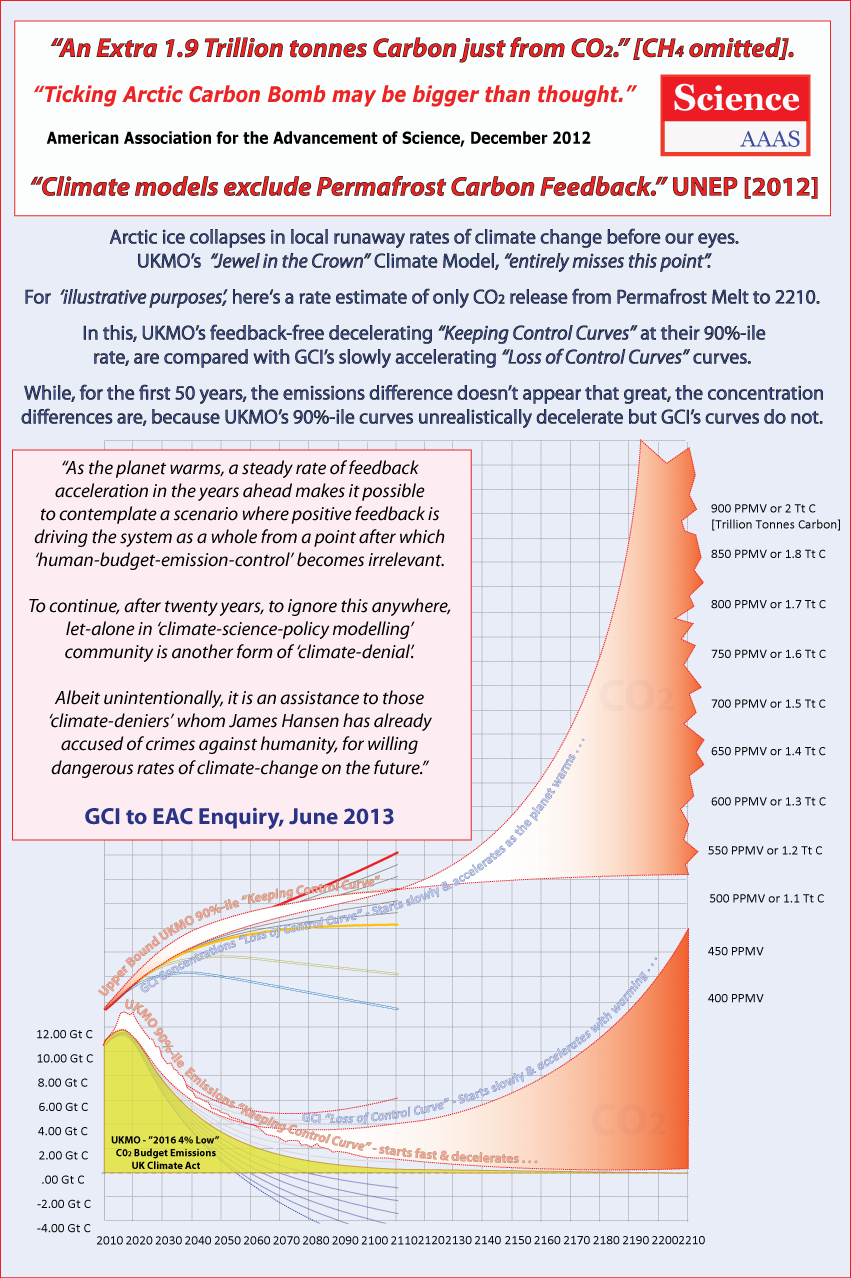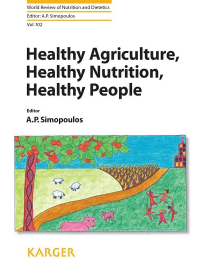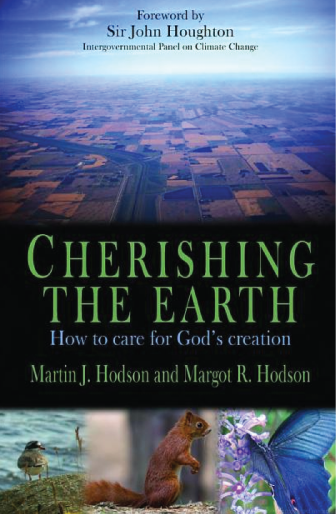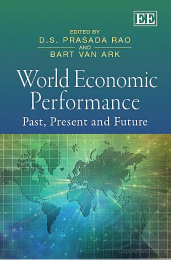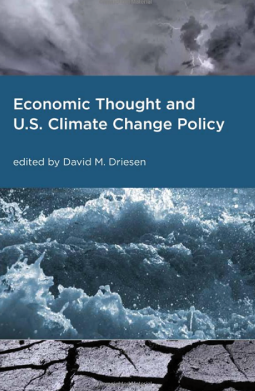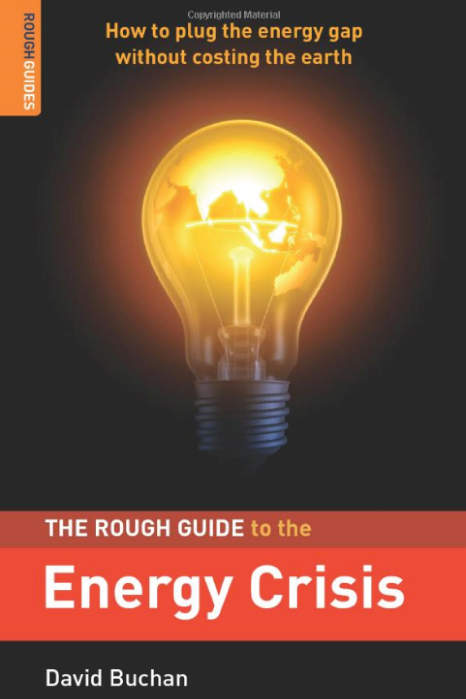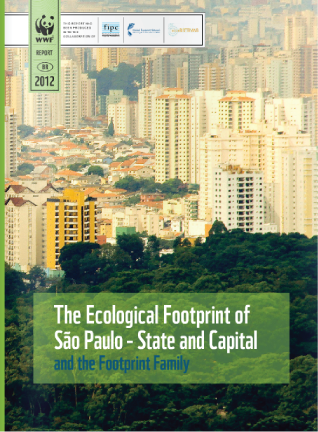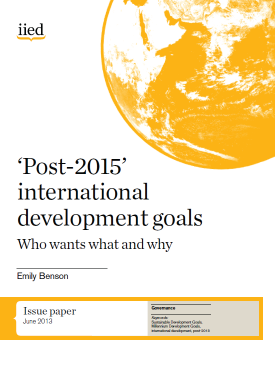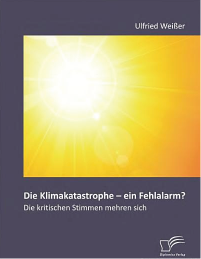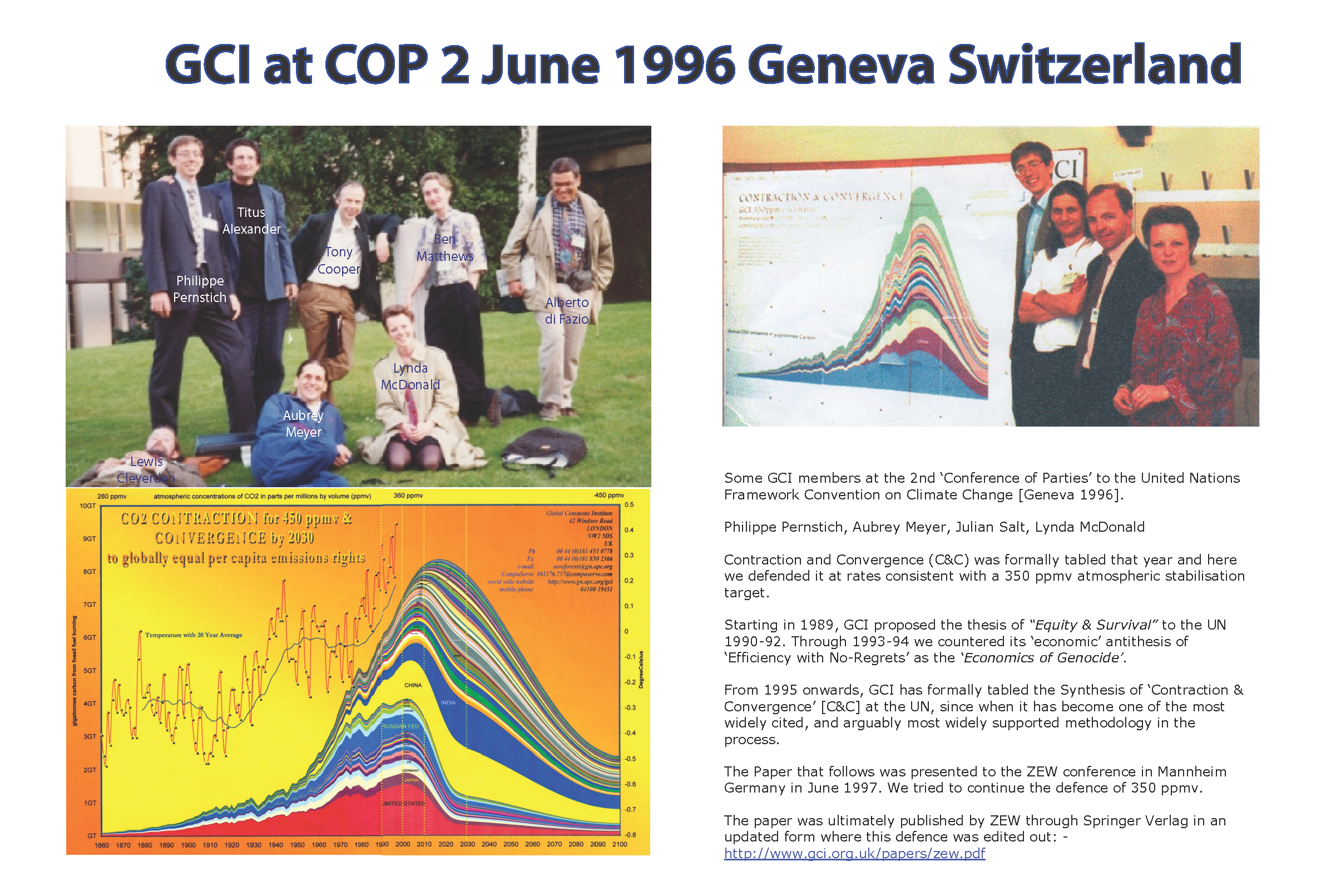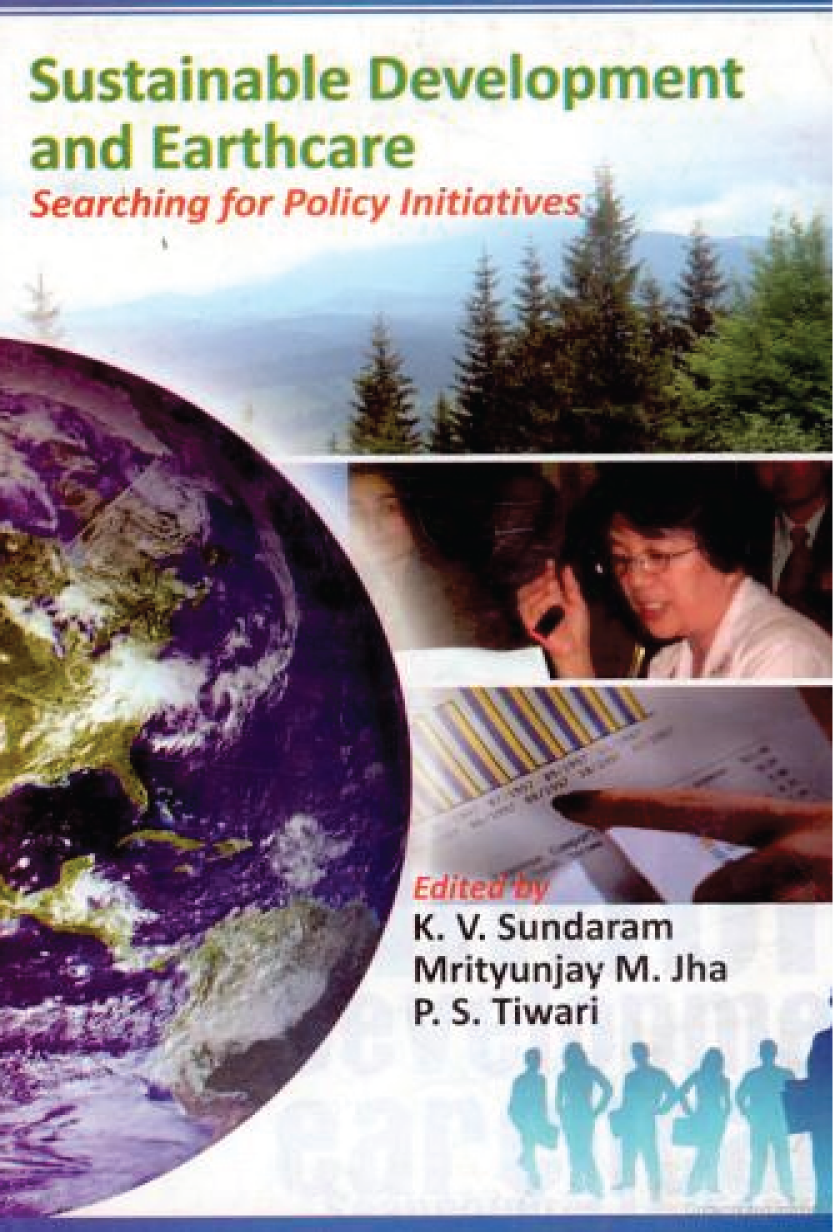 CBAT
CBAT NEWS
NEWS
UNESCO COMEST on C&C
"The principle of contraction & convergence refers to the emission of gases contributing to the greenhouse effect. A fair and pragmatic approach, it is argued, would be to move gradually towards quotas that would not be indexed on GDP, as is the case in the Kyoto Protocol, but rather on population, while gradually reducing the permitted total towards the 60% reduction commended by the Intergovernmental Panel on Climate Change (IPCC). Such a principle may be seen as a consequence of both the principles of environmental justice and the principles of earth as global commons. The particular problem whether future emissions allocations should be based on a per capita basis, as the so-called “contraction and convergence” proposal suggests, or on a country basis, might be seen in a different light if humanitarian aid were internationally organized on a basis of each country’s ability to pay. The greater duty of rich countries to contribute to such aid might be politically easier to accept than more stringent emission limits imposed on “more polluting” and “past polluting” countries than LDCs (least developed countries), which would also cost “richer” countries more."Contraction and Convergence (C&C) is the science-based, global climate policy framework proposed to the United Nations since 1990 by the Global Commons Institute (GCI).
See http://www.gci.org.uk/briefings/ICE.pdf
UNESCO - The Ethical Implications of Climate Change: A Report by the
World Commission on the Ethics of Scientific Knowledge and Technology (COMEST)28 June 2013 - "Unprecedented opportunity to reduce global health inequality with C&C " Israel Journal of Health Policy Research
Adaptation is very important, but defensive and reactive. There is a much bigger prize: many positive public health policies have the potential to reduce the greenhouse gas emissions (including carbon dioxide) that cause climate change and simultaneously to produce major
health co-benefits.
The use of public transport and, particularly, active movement such as cycling and walking as alternatives to private vehicles can reduce carbon dioxide emissions and improve health by reducing obesity, cardiovascular disease, diabetes and many other conditions.
As livestock farming is the single greatest contributor to methane and carbon dioxide production [5], reducing the consumption of meat is a key policy. High levels of saturated fat intake from meat are of course implicated in cardiovascular disease and cancers. To benefit both health and the climate, it is suggested that each person eats no more than 100 grams of meat per day and has at least one meat-free day per week.
The reduction of health and social inequalities, locally, nationally and internationally, must underpin the policy response to climate change. The Climate and Health Council’s Charter has the contraction and convergence model developed by the Global Commons Institute as its central proposition:“There is an unprecedented opportunity to reduce global health inequalities through an international agreement based on social justice, whereby national greenhouse gas emissions converge to equal per capita shares within the planet’s sustainable and finite limit. Policies to address climate change can bring greatest health gains to those with the poorest health if they are implemented with health equity and sustainability as central, linked agendas.”
It may however be determined action to reduce greenhouse gas emissions by communities, rather than by individuals or governments, that offers the greatest hope of avoiding catastrophic consequences from climate change. The international Transition Initiatives movement includes over 150 communities promoting a community response through local food, energy, transport and cultural projects [8]. Transition Initiatives empower individuals, groups and communities: there is a rich public health literature concerning health improvement through community participation to promote both physical and mental wellbeing [9].
The Transition Movement in Israel should find fertile soil, because community plays such a central role in Israeli life. In summary, Manfred S. Green and colleagues make an important contribution to public health by articulating the evidence on the health impacts of climate change and helping to frame a collective response in Israel and beyond. We encourage policymakers in Israel and elsewhere to undertake both adaptation policies to enhance resilience to adverse climate events and determined action to reduce greenhouse gas emissions.
Improving public health by tackling climate change
Jenny Griffiths28 June 2013 - CBAT shows that GCI curves are more plausible & less scary than UKMO curves [at least to start with] . . . .The detail of this is in the GCI evidence to the EAC Enquiry
But CBAT makes this crystal clearRichard Betts, Bats with Ifs & Buts from the UKMO . . . at Bishop Hill . . .
Jun 28, 2013 at 12:13 AM |
Richard Betts
I'm returning this because the discussion has started up again on Twitter (after I responded to a tweet from Maurizio). I called Aubrey Meyer a scaremonger and alarmist because he keeps talking about runaway climate change and "loss of control" without any real evidence for this. He accuses the Met Office of misleading the EAC and downplaying the risks of runaway climate change, but these accusations are simply based on Aubrey's misunderstanding of carbon cycle modelling.
Gareth (Jun 17, 2013 at 4:26 PM) is correct that Aubrey's complaint is unfounded because he is not comparing apples with apples.
On page 19 of the document he prepared for the EAC, Aubrey presents three carbon budgets from two different studies.
The first two budgets are from one study, with and without climate-carbon cycle feedbacks ("coupled" and "uncoupled" respectively). To stay at 450ppm, emissions need to be lower in the coupled case compared to the uncoupled case because (in the model) warming causes a weakening of the carbon sinks so less carbon is absorbed by natural sinks. This is the positive feedback between climate change and the carbon cycle.
The third budget is from a different study, and is only the coupled case. Therefore it is not possible to say from this information alone whether the feedbacks between climate change and the carbon cycle are positive or negative, as there is no uncoupled case to compare against.
The second and third carbon budgets are both coupled cases, and the difference between them is simply that different models were used. There are huge uncertainties in the strength of climate-carbon cycle feedbacks and different models give different answers. The fact that two models give different answers does not necessarily mean that one has an additional negative feedback - in this case, they both have positive feedbacks between climate change and the carbon cycle, but the feedbacks are of different strengths. The positive feedback is weaker in the third budget than the second, which is why higher emissions still give 450ppm by 2050.
The statements in the final paragraph of page 19 ("This concentration result is negative feedback....no attention was drawn to the negative feedback UKMO were now claiming for coupled carbon cycling") are simply wrong. The simulated climate-carbon cycle feedback is not a negative feedback, we are not claiming it is a negative feedback, and hence there was no reason to draw attention to something that was not the case nor being claimed.
So it is not the case that the Met Office modelling changed from positive to negative climate-carbon cycle feedbacks. Our models still suggest positive feedbacks between climate change and the carbon cycle in the future - but not the runaway feedbacks that Aubrey speaks of.
. . . . . and now they're all in bits: -
Jun 28, 2013 at 4:35 AM |
A Meyer
Richard Betts of the UKMO appears not to be aware: -
[1] the Carbon Budget shown [Green - & what he calls the 3rd budget] *is the UK Climate Act* [2016 4% Low]
[2] the coupled & uncoupled curves shown are from the Hadley Model [as published in C4MIP IPCC AR4]
[3] UKMO advised EAC 2009 *they HAD included* 'coupling in the UK Climate Act
[4] but failing to reveal to EAC just *how they had actually done this* [by turning positive feedback into negative feedback - more than 100% sink-efficiency by 2050 etc etc]
[5] and *for the first time ever in 20 years of IPCC* showing concentrations as *falling* and *not rising*
[6] creating a policy-maker's nightmare with all this in that no-one had the vaguest clue with the UK Climate Act as to which were budget-emissions and which were feedback emissions [as indicated in the evidence at http://www.gci.org.uk/Documents/EAC_Real_.pdfSo Bishop Hill has grounds for speculating that this *is* evidence of UKMO repositioning towards the sceptics.
In that UKMO also has speculated on its website for at least the last 4 years that they haven't included major feedbacks [Permafrost melt etc] because they just don't know how to model this, there are grounds for speculating that we do indeed face the potential for 'loss of control curves' from feedback emissions, and it is misleading not to draw attention to this [as I and many others have done].
The GCI emissions:concentration curves on page 10 are consistently *lower than* [NB] the upper band curves from the UKMO. So at least to start with this is less scary and more plausible than UKMO.
Certainly, none of this is nearly as 'scare-mongery' as your slide set for the Oxford conference in September 2009 showing the potential for *massive positive feedback* starting 2010.
So for particularly *you* to describe GCI's evidence as 'alarmism' in this context is a little - how shall I put it? - 'lush' I fear.
Consequently, my advice to you Richard is this: - if you want to turn water into wine and drink it, that's fine. Probably many will make merry and drink it with you, unless [that is] you are trying to walk on it at the same time. That is a different matter, because God knows, no-one will know what else is going to be in it.
28 June 2013 - Measured & decisive post from Greensward Civitas about UKMO's gerrymandering the issue of sink-failure
There's an intense debate going on right now about something called "sink failure" in the climate models that are being used to determine a true upper limit to the "safe" carbon levels in the atmosphere to avoid runaway climate change.
The "sink" is the carbon absorption of forests, undeveloped land areas and the ocean. The ability of these sinks to act as a "carbon sink" has been in decline as the carbon in the atmosphere has increased, thus making the reliance upon the earth's ability to absorb released carbon a less reliable factor in these models more
27 June 2013 - "McMichael et al have proposed C&C." Healthy Agriculture, Nutrition, People A P Simopoulus
Less meat on the plate and fewer livestock in agriculture are two of the most obvious elements of joint guidelines for dietary advice and ecological sustainability. The idea has been around for almost 40 years but the rationale for such joint guidelines is being examined more closely now. Since meat and dairy products provide protein, fats, sugars, and micronutrients the consequences for health of substantially lower intakes are not entirely clear, but they are likely to be mainly positive and manageable.Recognizing that moderate intake of animal products can be valuable in preventing malnutrition in developing countries and in certain groups in developed countries, however, McMichael el al. have proposed a policy of contraction and convergence, ["an obvioulsy simple and attractive idea"] i.e. reducing intakes in affluent countries and increasing in takes among the poorest so that intakes converge on a global scale.
Healthy Agriculture Healthy Nutrition Healthy People
A P Simopouluse27 June 2013 - "Implementing C&C depends on how much governments are pressurized." Cherishing the Earth M & M Hodson
Contraction and Convergence
It will be impossible for developing countries to modernize without using more energy. Significant financial investment will be required if these new energy sources are to be renewable rather than carbon-based, and some will wish to use their own available fossil fuels. In Chapter 8 we saw that some governments are actively considering some form of carbon rationing for individuals, possibly a personal carbon allowance.Contraction and Convergence (C&C) is an extension of this idea to the international arena. The idea is relatively simple in principle, and was first proposed by Aubrey Meyer of the Global Commons Institute (GCI).
First, we need to agree on a level of carbon dioxide in the atmosphere as a target. Then we calculate how much carbon dioxide each person on the planet can be allowed if everyone is to have an equal share. Each country would be allowed this amount multiplied by the number of its citizens. If the target CO2 concentration in the atmosphere was fixed at a level of 450 ppm by 2100 (the level suggested by GCI, this would undoubtedly mean that the Western industrialized nations would need to decrease their emissions very markedly. The developing nations would, however, have some room to increase their emissions to enable them to industrialize.
If a nation wanted to emit more CO2 than its target then it would have to buy credits from a country that was emitting less than its goal. So this is a just system, where everyone would be treated equally. Not surprisingly, many of the industrialized nations are not that keen, and the developing nations quite like the idea. Whether it will ever be implemented will depend on how much our governments pressurize the international community, and how much we pressurize our govemments.
Cherishing the Earth M & M Hodson26 June 2013 - "Building an international regime around C&C." World Economic Performance, Prasad Rao Bart van Ark
I recall a conversation with leading environmental officials in China in the early 1990s, in which my Chinese inter-locuters stated that human-induced global warming was a substantial problem that required a global response. They said then that China would accept controls on levels of greenhouse emissions and be ready to join a global system for trading emissions rights, so long as the starting point was equal per capita initial rights.This is not in itself an unreasonable position but it would provide no basis for agreement with developed countries. Eventual agreement must be sought somewhere between the 'established levels' and the 'equal per capita' bases for initial allocations. I have supported suggestions for building an international regime around the idea of 'contraction and convergence' with rights allocated on the basis of established emissions, with some additional restrictions on developed countries and headroom for developing countries over a long transition period, there would be a shift towards equal per capita allocations.
Such a system would involve large transfers of income to countries whose per capita incomes and emissions remained well below global average levels. It would be important for continued international support for the system that these transfers be embedded into a framework of international cooperation on development that made them productive for development.
World Economic Performance Past Present and Future
Prasad Rao Bart van Ark26 June 2013 - "5 critical responses to climate change." Permavegan leads the way and gets support . . . . .
President Obama’s June 2013 Climate Plan and speech at Georgetown University signal a breakthrough in White House strategy.
But the President is still dangerously off course.Instead of continued US “leadership,” we need a new era of multilateral US cooperation on five critical responses to the climate crisis: -
- Emergency reduction of atmospheric methane toward a Kyoto II confidence-building target of at least 1600 ppbv to slow the pace of Arctic system overheating;
- Vegan ecological transition to promote deep resilience in the energy, food, forest, healthcare and water sectors;
- Contraction and Convergence for timely and equitable management of fossil fuel emissions worldwide;
- Ratification of the Rome Statute and recognition of compulsory jurisdiction under the International Court of Justice to strengthen the multilateral rule of environmental law;
- Monetary reform to stabilize the financial system and protect long-term returns on investment in climate change mitigation and adaptation.
17 June 2013 - C&C has a musical structure. "There's growing acceptance of this reality." Pachauri to camera in C&C music video16 June 2013 - "C&C advocated by GCI since 1990; endorsed widely." Economic Thought & US Climate Policy - Ed David Driesen
A number of academics and policy analysts have proposed some version of this idea. The Global Commons Institute has been advocating it in international climate negotiations since1990, under the name Contraction and Convergence. Under their proposal, the developed nations would be given an adjustment period of several decades during which time they would "contract" their emissions until the world finally "converged" on a uniform per capita allocation. Their proposal has been endorsed by a number of governmental and nongovernmental organizations, including the European parliament and India. The general approach has been endorsed by German Chancellor, Angela Merkel among others. GCI has suggested setting a deadline of either 2020 or 2050 for reaching an equal shares allotment.
See GCI briefing
Economic Thought and U.S. Climate Change Policy
David M. Driesen15 June 2013 - UKMO falls to the Epimenides Paradox . . . .
The Epimenides Paradox - the UKMO responds to GCI's Evidence to the EAC Hearings on the the UK Climate ActAs Pinnochio might have said, "Everything I say is untrue."
These words are a classic statement of the Epimenides ParadoxIn systems terms, it is 'conceptually' a self-referential approximation of 'perfect equilibrium consciousness'. Zen Buddhists call this perfect equilibrium consciousness 'Sartori'. However, it is - crucially - a state of self-referential consciousness that transcends the push-me-pull-you of low-resolution binary conceptual 'thought-process' of 'Indecision Theory' [To Be or Not to Be . . . She loves me, She loves me not . . . etc . . . ].
The UK Metereological Office [UKMO Hadley Centre] have for years been trying to develop an equilibrium climate-model. What they had developed, since the first 'Berne Climate Model' results were published by IPCC in 1994, was used in 2007 to generate the UK Climate Act which became law in 2008.
However, at the EAC Enquiry into this in 2009, they were forced to concede to the record that major feedback effects had been omitted from the model. Consequent to that they went on record laying out in detail all the feedback effects which were omitted, admitting that these were 'a big deal'.
All the UKMO's published admissions of feedback omissions were cited in GCI's evidence to the current EAC Enquiry. It couldn't be clearer.
This evidence was distributed before that session of the Enquiry and it was discussed at the current EAC Equiry session on the 12th of June 2013.
When questioned by EAC Committee Member Martin Caton about this evidence, UKMO's Chief Scientific Officer [CSO] Julia Slingo, with Mr Winston Lowe of UKMO at her side, stated decisvely that it was all 'absolutely untrue'.
The clear and alarming message in this is that what the CSO told the EAC Enquiry is that, 'Everything we have said about feedbacks omitted or included is absolutely untrue.'
Is that what the Julia meant? When you stand up and denouce your enemy by shooting yourself in the head - like the Epimenides Paradox - it is a riddle. '
Was she really libelling Nicholas Stern for example who in May 2013 told the IMF: -
”The scientific models mostly leave out dangerous feedbacks/tipping points.
We need new generation of models.”Or was her target UNEP who published this in 2012: -
“All climate projections in the IPCC Fifth Assessment Report, due for release in 2013-14, are likely to be biased on the low side relative to global temperature because the models did not include the permafrost carbon feedback.”
On the other hand was Julia admitting to having deceived House of Commons by UKMO first saying the feedbacks were in, and then saying they weren't, and then saying it was all 'absolutely untrue'.
In the George Orwell Novel 1984, there is a touching scene at the end between Julia and Winston
Some time after being restored to orthodox thought, Winston encounters Julia in a park.
It turns out that Julia has endured a similar ordeal to Winston, and has also been purged of rebellion.Each admits betraying the other:
"I betrayed you," she said baldly.
"I betrayed you," he said.She gave him another quick look of dislike. "Sometimes," she said, "they threaten you with something – something you can't stand up to, can't even think about. And then you say, 'Don't do it to me, do it to somebody else, do it to so-and-so.' And perhaps you might pretend, afterwards, that it was only a trick and that you just said it to make them stop and didn't really mean it. But that isn't true. At the time when it happens you do mean it. You think there's no other way of saving yourself and you're quite ready to save yourself that way. You want it to happen to the other person. You don't give a damn what they suffer. All you care about is yourself."
"All you care about is yourself," he echoed.
"And after that, you don't feel the same toward the other person any longer."
"No," he said, "you don't feel the same."
Throughout, a song recurs in Winston's mind:
Under the spreading chestnut tree,
You sold me and I sold you
Here I lie and Here lie you
Everything we say's untrue . . . .To Be or Not To Be
Conscience making cowards of us all, as Shakespeare once said . . . .
"The Slings and Arrows of outrageous Fortune"?What you can be quite sure of is that as with Climate-Gate, Climate-Contrarians will have a field day over this - its even better than the 'Quaker Guns' [the biggest Confederate Bluff in the US Civil War] that held Unionists at bay for months with a row of chocolate logs.
~~~~~~~~~~~~~~~~~~~~~~~~~~~~~~~~~~~
15 June 2013 - "C&C an important contribution at glopbal warming negotiations." Lawless World Philippe Sands
Governments are not the only participants, unlike in the old days. The demands of legitimacy and accountability in international law-making mean that the doors have been opened to all and sundry.For the global warming negotiations there were hundreds of observers and participants, representing corporations (the oil and automobile industries in particular) and nongovernmental organizations such as Greenpeace and Friends of the Earth, as well as a myriad of developmental groups like Christian Aid and Oxfam. There were a smaller number of NGOs from developing countries, some of which were highly effective.
There were also individuals participating on their own account, like Aubrey Meyer from Willesden, north London, who attended all the sessions and has now made an important contribution with his theory of 'contraction and convergence' (which proposes setting a global cap, and then gradually reducing emission entitlements until each person on the planet has the same emission rights).
Lawless World
Prof Philippe Sands14 June 2013 - "C&C - Faultless on Moral Grounds." A Rough Guide to the Energy Crisis David Buchan
Contract and converge?
If the process of differentiated emission or fossil-fuel-based energy cuts were to continue, it could theoretically one day lead to everyone in the world having the same level of greenhouse-gas emissions per head. This is the hope of the Global Commons Institute, which came up in 1995 with their "contraction and convergence" proposal. Their idea is that overall emissions should contract to a safe level, and that per capita emissions should converge to the same level for all, It can hardly be faulted on moral grounds. But the political feasibility of persuading north Americans, Europeans and Australasians to agree to massive cuts in emissions which, if low-carbon energy cannot match the potency of today's fossil fuels, will compromise their current lifestyles, so that China and India can raise their standard of living is quite another matter. That is why we need action on the supply side.A low-carbon diet for the wealthy
Low-carbon technology is the only "get out of jail"' card the rich countries can play so that they can avoid having to cut their own energy use in parallel with their emissions. But the industrialized countries will also have to be far more generous in sharing low-carbon energy techniques to developing countries than they have historically been with other technologies. The large pharmaceutical companies' discounts in the price of drugs to help developing countries in order to combat AIDS and diseases such as malaria might be seen as a precedent for low-carbon technology transfer to developing countries.
A Rough Guide to the Energy Crisis
David Buchan14 June 2013 - "Unequal footprint data makes it possible to support C&C." The Ecological Footprint of Sao Paulo WWF 2012
The three indicators reveal the unequal distribution of resource use among the inhabitants of the world's different regions. Based on such data it is possible to provide support for development policies and endorse concepts such as contraction and convergence, environmental justice and fair sharing.
The Ecological Footprint of Sao Paulo
The WWF Report 2012
11 June 2013 - "C&C sends an unambiguous signal." Post 2015 International Dvelopment Goals IIED
Re-distributing resources
Any post-2015 consensus becomes even more fragmented when it comes to distributing our natural resources or ‘global commons’. Scarred by the climate change negotiations, or in some case sceptical about proposed biophysical thresholds,35 some advocates recommend that the politics of benefit and burden sharing of our environmental services are restricted to other intergovernmental negotiation processes. The HLP reiterates the commitment to “hold the increase in global average temperatures below 2 degrees Centigrade above preindustrial levels, in line with international agreements”3 and acknowledges ecological limits more broadly, but does not use the concept of planetary boundaries as a founding principle for their framework.On the other side of the debate, many NGOs informed by work on planetary boundaries are advocating ‘contraction and convergence’ models. For example, CIC’s Alex Evans argues that incorporating planetary boundaries at the heart of the post 2015 framework would “send an unambiguous signal about the need for fair shares to natural assets”36 thereby helping to release the political deadlock of the climate change negotiations. However, scientist Johan Rockstrom and economist Jeffrey Sachs37 raise concerns over contraction and convergence models because “it seems impossible that politicians in rich countries would ever agree to drastically lower the standard of living”.38 This, they argue, implies that developing countries will be capped at “a level of income that is below the income enjoyed by rich countries”. In response, Evans argues that the contraction and convergence model applies to key resources and ecosystems rather than per capita incomes.36
To bridge issues of global equity and resources, civil society groups such as the ACT Alliance endorse the ‘Greenhouse Development Rights framework’.39 The model combines justice-based disaggregated data to determine three measures by which to share out the global ‘effort’ needed to meet the demands of a rapidly changing climate. The measures are the right to develop, the responsibility for historic and current levels of greenhouse gas emissions and the capacity to fund adaptation and technology transfer to develop by alternative means. Taken together, these establish a responsibility and capacity index for each country.
11 June 2013 - CBAT Evidence Live to Environmental Audit Committee Carbon Budget Enquiry, Wednesday 12th of June10 June 2013 - "With C&C recommendations to Governments, GCI can be very proud." Klimatkatastrophe Ulfried WeisserSlightly awkward translation from Geman original
Rahmstorf and Schellnhuber can but point out that in the Anglo-American enjoys a great reputation in related approach relevant environmental circles.
This is the book Contraction and Convergence - The Global Solution to Climate Change by Aubrey Meyer. Here a global framework for reducing greenhouse gases is proposed to confront climate change, of which the Entwieklungslander will be even stronger than the developed countries concerned. Again, it is required global emission per head of population should be heruntergesehraubt to a safe, and indeed for all nations equal, level. This involves initially the convergence, namely 2030 to ail States bring their per capita emissions to the same level: India geringfugigen by a rise in the U.S. by a dramatisehcn
Case. Is then given by approximation (convergence) of the Gleiehstand reached, to the emission of CO2 by a decrease (contraction) in the totality of all countries in lockstep lowered, until about the year 2100 to the level of 1930 and continue until the year 2200 to the pre-industrial levels by 1870. It should be achieved near the zero line. - If you expect that the dangerous increase of greenhouse gas emissions began with the industrialization, must consequently seek to reduce the overall menschlichc company to pre-industrial levels.
This approach con contraction and convergence is known as a C&C to the parties involved. It is from the Global Commons Institute based in London, which was founded in 1990 by Aubrey Meyer. Many carriers and employees of this institution belong to the Green Party for England and Wales, which achieved a seat in the House in the most recent general election.
The Institute's motto Climate Justice without Vengeance. Contraction and Convergence is the scientific climate policy framework, says the institution in its German translation of these objectives.
The scientific end levels over the Beziellllllg between an economy and zero-emission concentrations (mean: of greenhouse gases in the Atmospare UW) constantly evolving, the C & C rates can therefore be revised periodically and continuously developed.
Here, as in the circles of the German climate researchers assumed that a particular political action is scientifically begrundbar. Ultimate goal here an emission-free Wirtsehaft. That was to say that the power supply is switched to 100 percent renewable energy.
The Global Commons Institute can be very proud: -
The British Royal Comsission on Environmental Pollution and the German Scientific Advisory Council on Global Envrionmental Change have both expressed their climate change recommendations to their governments as formal C&C and the European Parliament voted for a C&C resolution in 1998.07 June 2013 - "GCI has defended 350 ppmv since COP-2" Jonathan Maxson strongly argues urgency, Veganism & CH4 control.Posted on June 7, 2013 by Jonathan W. Maxson
Over the last couple of months I have been blogging about a methane complement to “Hansen et alia’s (2008) call for 350 ppm CO2.” However, after a recent review Aubrey Meyer’s compelling June 2013 Draft GCI Evidence to EAC Enquiry into Carbon Budgets and the UK Climate Act (from which I quote below), I am ashamed to recall that Global Commons Institute (GCI) in the United Kingdom is likely the first and long-running “shop” to propose and defend an atmospheric CO2 target of 350 ppm:
Here - At the 2nd ‘Conference of Parties’ [COP 2] to the UN Framework Convention on Climate Change 1996, GCI tabled the Contraction and Convergence (C&C) model for achieving UNFCCC-compliance. At COP-2, GCI defended C&C at rates consistent with a 350 ppmv atmospheric stabilisation target…
Their Paper was presented to the ZEW conference in Mannheim Germany in June 1997. It continued the defence of 350 ppmv and the paper was ultimately published by ZEW through Springer Verlag in an updated form but where this defence was edited out…
From 1995 onwards GCI has advocated the synthesis of ‘Contraction & Convergence’ [C&C] at the UN, continuously making the case for realistic feedback-averse rates of C&C to be adopted…
Since that time C&C has become the most widely internationally recognized, cited and arguably the most widely supported methodology in the process…
It seems clear that GCI has never stopped defending 350 ppm CO2, but has always argued that the global contraction budget should be timed and targeted to account for both multilateral emissions equity and nonlinear feedback precaution.
Why did I so recently forget this – and throw Meyer’s long-running 350 ppm CO2 advocacy “under the bus” in the process?
When I first began to seriously study the climate crisis, I was relying almost exclusively on the US narrative for information, and therefore quickly gravitated to Jim Hansen’s writings, especially his 2009 book Storms of My Grandchildren. In this text - and Hansen et alia’s earlier (2008) paper Target Atmospheric CO2: Where Should Humanity Aim? - Hansen presented what I thought was an original case for 350 ppm CO2 on the basis of an extended discussion of the relationship between CO2 and temperature in the Antarctic Ice Core Record. Hansen’s team did not, to the best of my knowledge, credit GCI or any other group with the initial recommendation of a precautionary 350 ppm CO2 target.
This reading had the effect of positioning me, at the start, in a Hansen school of climate science that was focused on 350 ppm CO2, a US carbon tax, and a carbon-led interpretation of the Antarctic Ice Core Record.
By the time I had my series of methane “epiphanies” (or perhaps they will ultimately prove to be delusions) in September of 2011, my leading foot had shifted to the Meyer school of 350-450 ppm C&C, while my trailing foot remained in the Hansen school of 350 ppm and a carbon tax.
I did not get far when I first tried to bring my methane findings to the attention of Meyer and Hansen because I was even more inarticulate in 2011 than I am now, and neither opinion-leader was interested in a contrarian methane-led theory of climate change. Hansen (I recently learned) had indeed been working on an alternative scenario that was rather more sophisticated than my crude anthropogenic methane reduction thought experiment, but Hansen’s alternative scenario was not based on a methane-led theory of climate change, and it was certainly not oriented toward an emergency reduction in the consumption of livestock products to save the Arctic ice.
Meyer, for his part, was not keen to have a global C&C carbon budget become overly influenced by paleoclimate unknowns at the expense of radiative forcing knowns, in part because of ambiguous lags and discrepancies in the ice core data. Nor did Meyer express interest in breaking out a distinct C&C curve for the management of atmospheric methane.
Meyer instead took the plausible and appropriately cautious position that anthropogenic methane emissions remain a secondary global warming emission relative to the radiative forcing from anthropogenic carbon dioxide emissions, and that non-anthropogenic feedbacks of CH4 plus CO2 in response to anthropogenic CO2 emissions are of greater concern – especially in anticipation of declining CO2 sink capacity and a concomitant increase in the airborne fraction of CO2.
This analytical pathway is allowing Meyer to develop a cutting-edge CBAT interface that allows users to view real-time consequences of various CO2 emissions scenarios across four conceptually distinct and logically sequenced domains. (See Draft GCI Evidence to EAC Enquiry into Carbon Budgets and the UK Climate Act for a discussion).
Meyer’s CBAT modeling, in my view, is not only absolutely necessary, but probably the best way forward for the UK Climate Act in 2013 and for the framing of climate policy globally as we pass through a difficult ”Kyoto II” window into a post-2020 climate stabilization regime.
This said, I cannot neglect my independent line of thought, which is deeply respectful of C&C, but has nevertheless become fixated on a contrarian methane-led model of climate change from which I cannot readily escape. It seems probable (more to others than myself) that my methane analysis will prove incorrect in the end, but I am afraid I cannot abandon it until I have reached a definitive rebuttal. Until then, I must persevere on the outskirts of the consensus paradigm…in awkward proximity to a party of global warming deniers who are not at all in my own alarmed vegan analytical camp.
A Permavegan Response to Three Climate Uncertainties
Meyer’s June 2013 Draft GCI Evidence to EAC Enquiry into Carbon Budgets and the UK Climate Act lucidly illustrates three climate uncertainties that UK legislators must take into account.
The first uncertainty, on the sink side, is the earth’s net CO2 absorption capacity. I am such a junior researcher in this field, and my methane-led research is so contrary to the current CO2-led consensus, that I am frankly humbled by the challenge of this calculation. Indeed, I lean toward considerable doubt that any living scientist has a firm handle on just how much future CO2 absorption capacity we can trust our land and ocean sinks to provide. Dangerous absorption limits could be just around the bend, or they could be a hundred years off.
What I can safely say with respect to this problem is that vegan-engineering is an achievable, equitable, and precautionary strategy to maximize the earth’s sink capacity in light of enormous future sink uncertainty.
The second climate uncertainty highlighted by Meyer’s report – this time on the source side – is the amount of feedback forcing we should plan to expect from non-anthropogenic CH4 and CO2 emissions that are primarily located in the high northern latitudes and are therefore sensitive to Arctic warming and nonlinear rates of glacier and sea ice melt. While the trend lines for CH4 and CO2 emissions from these sources are uncertain, the practical certainty of near-term Arctic summer ice loss has suddenly snapped into focus. This in turn implies consideration of nonlinear CH4 and CO2 emissions feedbacks – together with jet stream and gulf stream impacts – that could be abrupt and catastrophic.
Here again, what I can safely say with respect to these future non-anthropogenic CH4 and CO2 emissions feedbacks is that vegan-engineering is an achievable, equitable, and precautionary strategy to maximize atmospheric CH4 reduction and atmospheric CO2 sequestration in light of future uncertainty.
At the same time, vegan-engineering is our single best strategy – by far – to enhance global food system resilience in the face of potentially catastrophic regional crop losses from storms, droughts, floods, and other disruptive climate events.
A third climate uncertainty that is evident in Meyer’s report concerns future estimates of average global temperature disruption.
Meyer cites five scenarios of climate sensitivity that range between 1 and 8 degrees Celsius of temperature disturbance in response to a hypothetical doubling of atmospheric CO2 from a pre-industrial concentration of 280 ppm to a post-industrial concentration of 560 ppm.
This is an excellent summary, but I believe we must also model climate sensitivity in response to hypothetical doubling and tripling of atmospheric CH4 from a pre-industrial concentration of 715 ppb to post-industrial concentrations of 1430 ppb and 2145 ppb, respectively.
Although the mathematical basis of the carbon-led sensitivity estimates cited by Meyer (including the most sensitive Earth System value) may theoretically appear to preclude the need for a CH4-led analysis, I still believe policymakers in the UK and worldwide must request and review climate sensitivity models that are keyed to CH4 doubling and tripling.
In light of the climate uncertainties just noted, one important strategy for risk reduction involves rapid curtailment of fossil fuel emissions. However, from a vegan analytical perspective, it is even more prudent – and much less costly in terms of reduced access to life-sustaining economic goods – to implement a complementary pathway of vegan-engineering. When these two risk reduction pathways are logically sequenced and combined, the result is a balanced approach to the climate crisis.
Update June 8, 2013: UK and global policymakers also need to seriously consider the AMEG proposition that Arctic geo-engineering is now a critical additional prong in a balanced risk reduction approach. However, in the absence of a simple collegial confirmation from AMEG that vegan-engineering is an achievable, equitable and precautionary “root cause” response to the climate and food insecurities that are resulting from continued Arctic overheating, I cannot help but express concern that AMEG is dogmatically biased and may therefore be overstating the geo-engineering argument. It is one thing to discuss geo-engineering in tandem with vegan-engineering. It is quite another to propose geo-engineering without any promotion of the case for vegan-engineering whatsoever.
07 June 2013 - "Perhaps C&C could be used to divvy up extraction too." Political Climate N American Perspectives
Slicing up the pie With energy exploration and production companies and stocks so integral to world markets - how can we, on one hand, demand ambitious climate policy while, on the other hand, expect government revenue and pensions to be propped up by the returns from fossil fuel? We are creating a problem and will eventually need to pay for it. Furthermore, while it will probably be less than ideal, aggressive climate policy is inevitable in the coming decades. There will eventually be a limit. Who will be able to draw upon the "remaining" reserves and when will they be able to do it?The issue reminds me of the concept of Contraction and Convergence whereby international treaties will expect developed nations to steadily reduce their GHG emissions while poorer countries are are "allowed" to catch up and then level off their emission. Source: Global Commons Institute.
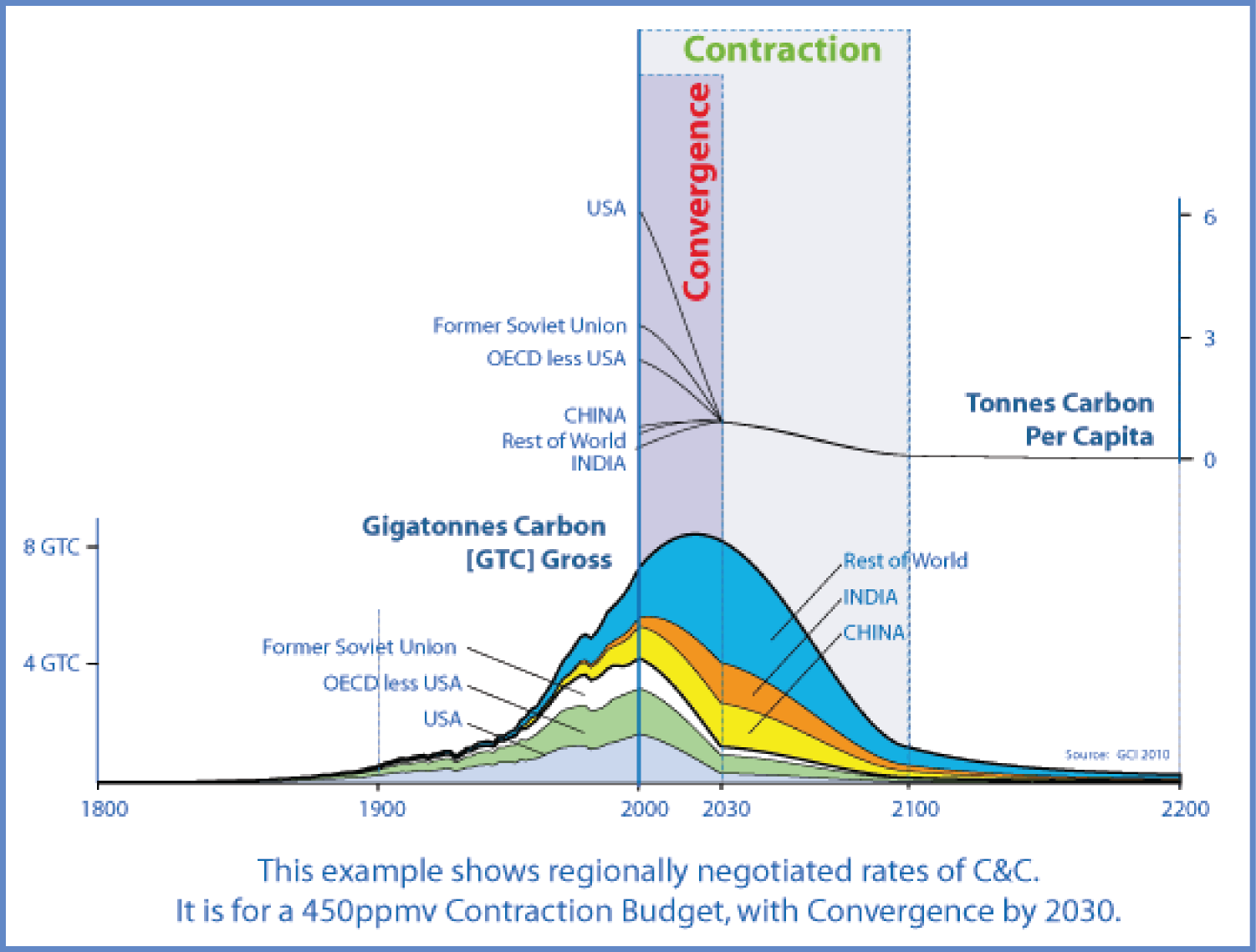
This concept, along with international emissions treaties, divides and allocates the use of the atmosphere, a global commons, according to varying conceptions of justice. On the flip side and for a private good, perhaps a "contraction and convergence" energy extraction budget could be used to divvy up the remaining fossil fuel reserves that are "allowed" to be extracted? With low-carbon gas at the top of the extraction queue and high carbon coal at the bottom, the economic and political stakes are very high.
07 June 2013 - "C&C - Hopefully will save world from looming catastrophe." Sustainable Development & Earthcare K V Sundaraman
Among the International Concerns aimed at multilateral efforts, a major one to be addressed is climate change. The air we breathe belongs to everyone, but the extent or 'space' to which it can be polluted by emissions like Carbon-dioxide (CO) and other greenhouse gases (GHG), is finite and limited. According to one estimate, India is now the World's fifth largest fossil fuel CO2 emitting country, the emissions having grown at 6 per cent a year since 1950 (Karunakaran, 2002). The only solution, by which the emissions could be contained within reasonable limits, will be by sharing this 'space' among all nations on some equitable basis.
According to the strategy of 'contraction and convergence' the rich countries should contract their emission levels, to a maximum extent (as they are the greatest polluters), while the poor countries may be allowed, (for the sake of developing their economies) to increase their emissions to a reasonable level. The per capita emission and the time for adjusting to safe levels of CO2 concentration are matters to be negotiated internationally. This strategy will hopefully lead to a just and legally-binding framework for global safety and saving the world from a looming catastrophe. While some developed countries like Denmark, The Netherlands, United Kingdom and Japan have endorsed this principle of 'contraction and convergence' at the Kyoto discussions, some others like U.S.A., who are the worst polluters, have not agreed to do so.
Sustainable Development and Earthcare06 June 2013 - "An idea presented via great graphics." Science as a Contact Sport Stephen Schneider
A view of the UN Climate negotiations in 1996 . . . .
One particularly visible environmental NGO was the Global Commons Institute from the United Kingdom. Its charismatic leader, Aubrey Meyer, became a darling of developing countries by pushing for Contraction and Convergence. This called for the overall planetary emissions to contract to much lower levels by mid-Century and for the low per capita emissions in poor countries to converge with the higher emissions in rich countries, as a measure of equity. This analysis was not popular with economists, since it was basically an idea presented via great graphics, but it was not based on an accepted economic model calculation making costs and benefits explicit. Regardless of its merits, it is a good example of the kinds of ideas that were kicked around in the informal sessions held before the governments got together in closed-door sessions to hammer out protocol language for the Conference of the Parties (COP). Many of these events were well covered by the international media.
Science as a Contact Sport
Stephen SchneiderSteve died of a heart attack on the 19th July 2010. An obituary appeared in the Guardian. He was young and for many this was a sad loss of a great champion. However, he left a great legacy of work on climate change where he remained a soft and gentle C&C advocate: -
"Future international climate change agreements should certainly consider the contributions of the developed (high per capita emissions) versus developing (low per capita emissions) countries to climate change.
Aubrey Meyer of the Global Commons Institute has long argued for the principle of "contraction and convergence." "Contraction" entails the shrinking of the developed countries' "share" of CO2 and other greenhouse gas emissions. In Meyer's view, rich countries, who are appropriating a disproportionate fraction of the atmospheric commons, need to cut back their emissions and allow poorer countries to emit more and catch up.
Eventually, the two groups will "converge" at a level at which per capita emissions will be equal across nations while at the same time meeting "climate safe" emissions targets for the world as a whole (see "Trading Up to Climate Security")."
~~~~~~~~~~~~~~~~~~~~~~~~~~~
Stephen Schneider’s climatechange.net is a critical component of Steve’s legacy, and is an outreach tool about which Steve cared deeply. He saw this website as way to effectively speak to diverse groups who are crucial to countering the misinformation campaigns of special interests and ideologues as well as developing and implementing effective climate policies: the media, the community of disciplinary scientists, decision makers at local, state, national and international levels, the faith communities, celebrities committed to supporting change, and corporate executives in key industries as well as the public—informing all of us of the latest findings and the risks we face, and inspiring us to continue to learn more and take action. And just as important, Steve was profoundly dedicated to influencing, impacting, and developing the next generation of climate scientists and policy makers through his teaching and outreach, as his many students will attest. The words mentor and friend are used together by so many that one wonders how one person could have so much impact on so many lives.
Steve hoped that this website would be useful to all interested in the interdisciplinary science of climate change. As he said, this site is a work in progress — an in-depth mini-book with links to related websites and relevant literature, placed in a context that was his view of the climate problem.
We are currently updating climatechange.net with new and updated content in his words that he wanted to have posted as well as reflections by people he taught.
Please explore and come back often as this dynamic site evolves.
04 June 2013 - "UKMO unintentionally assists in Climate Denial?" Ommitting Feedbacks from models is an unanswered question.
‘Rapidly Inter Acting Feedback Effects’ [RIAFE] . . . and the dangers of doing too little too late.”
“As the planet warms, a steady rate of feedback acceleration in the years ahead makes it possible to contemplate a scenario where positive feedback is driving the system as a whole from a point after which ‘human-budget-emission-control’ becomes irrelevant.
To continue, after twenty years, to ignore this anywhere, let-alone in ‘climate-science-policy modeling’ community is another form of ‘climate-denial’.
Doing this unintentionally provides assistance to ‘climate-deniers’ against whom James Hansen has already and rightly leveled the charge of crimes against humanity for willing dangerous rates of climate-change upon the future.
For UNFCCC-compliance, the struggle is now between control and a loss of control. To meet this challenge we need a new approach that will be strategically goal-focused and precautionary. It will distinguish between ‘budget-emissions’ which we can control and ‘feedback emissions’ and effects which we can’t. The approach will quantify as best we can, the runaway potential of rates of change that result from ‘Rapidly Inter Acting Feedback Effects’ [RIAFE] and the dangers of doing too little too late.”
Draft Evidence to EAC Enquiry June 2013
